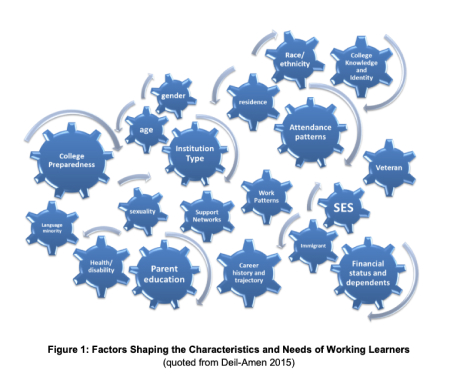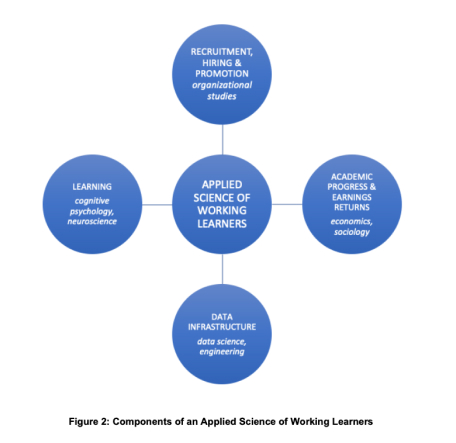motivation & ambition
The necessity for learning throughout the entire life course has only become more urgent, for three reasons. First, the growth of service-oriented and knowledge-based jobs made possession of the high-level literacy, numeracy, and critical-thinking and interactive skills associated with postsecondary education essential. Second, what counts as workforce-relevant skill has been constantly changing as digital platforms for managing flows of money, people, goods and information continually evolve. Third, constant dynamism in every field of human activity has come to require that virtually all workers learn to assume the flexibility and growth mindsets that enable them to transition between jobs, careers, and business sectors.
The first task is to develop an adequate conception of the human subjects comprising the category working learner. This is important because virtually all of the learning science and educational social science we have in hand is predicated on the study of people under the age of 22 who are presumed to be enrolled in school full-time. It is crucial that researchers and policy-makers develop a new human subject for inquiry: the working learner. Yet the population of working learners is complex and diverse. Regina Deil-Amen provides a provocative visual representation of this complexity in the figure to the right.
The lengthening life course means that there are growing numbers of working learners at every life and developmental stage. Learners vary by their relationship to childcare and eldercare obligations. Race, gender and social class profoundly shape how working learners make sense of themselves as potential students and workers. Geographic regions vary in their configuration of industries, educational offerings, and human-capital needs; this means that where learners live shapes the opportunities available to them. If researchers are going to build tractable scientific insight about working learners, it is essential that they have a clear and shared understanding of the diversity of people seeking to improve their lives through learning.
An applied science of working learners must recognize that learning happens in a wide range of organizational contexts: in traditional college and university classrooms, but also in workplace training and mentoring programs, through military and other public services, and in an ever-growing array of online instructional and certification opportunities provided by business and non-profit organizations of every description. This science also must recognize that learning is a longitudinal process. It happens cumulatively, as learners move through different stages of their lives and pass through multiple schools and workplaces. Observing learning for purposes of scientific knowledge and practical improvement thus requires coordination among the many sites through which learners pass, and among the public and proprietary systems that aggregate information about the educational experiences and employment histories of learners. Keeping all of this in sight requires insight and coordination across multiple scientific domains, as depicted in Figure 2 to the right.

